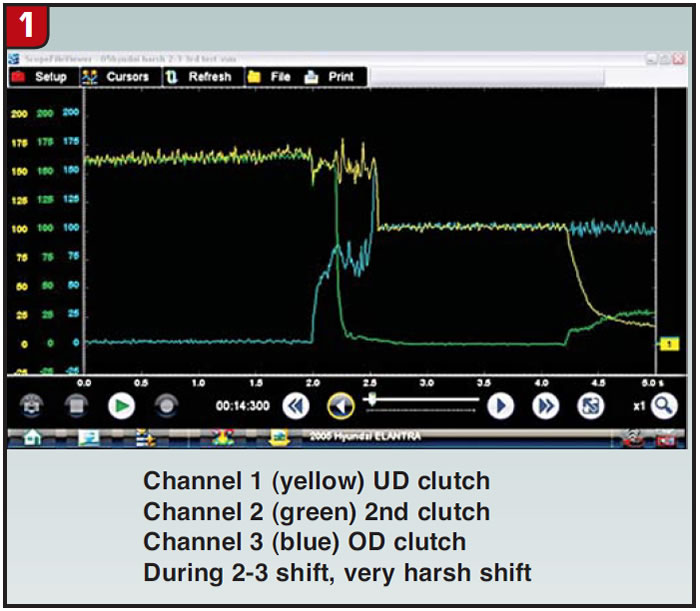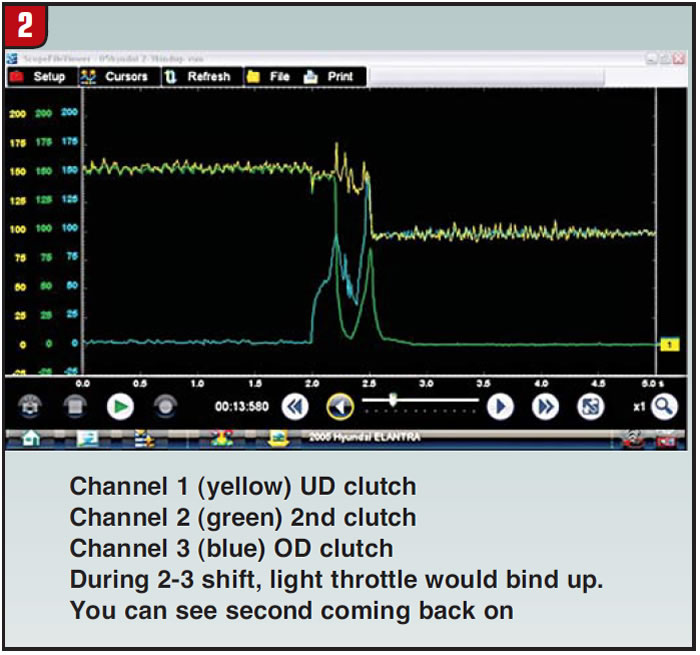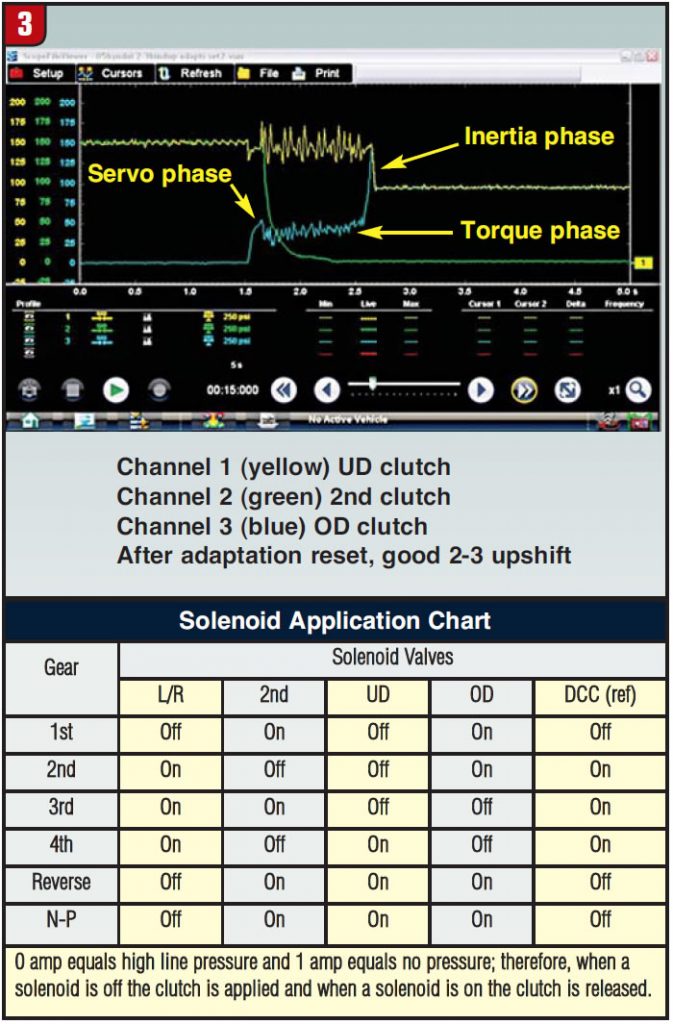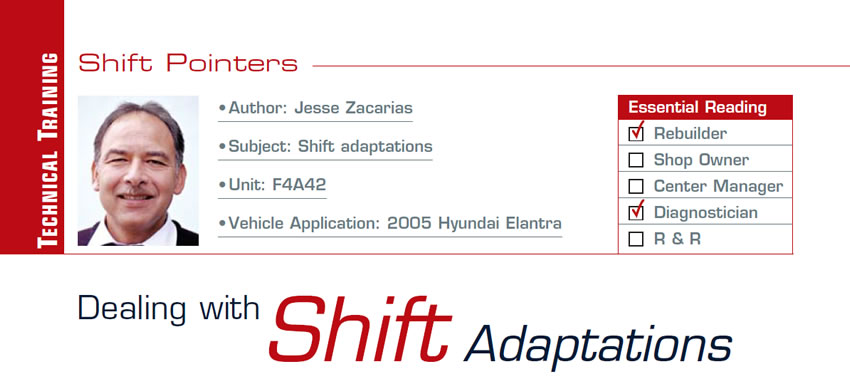Shift Pointers
- Subject: Shift adaptations
- Unit: F4A42
- Vehicle Application: 2005 Hyundai Elantra
- Essential Reading: Rebuilder, Diagnostician
- Author: Jesse Zacarias
Shift adaptations are something we have to deal with in the transmission industry. More and more car manufacturers are making use of this function to keep their transmissions shifting like new as they wear. Part of the function of adaptation is to allow the transmission control module (TCM) to compensate for the gradual wear of clutches and bands and for internal hydraulic leaks resulting from use.
This function is what we have to take into consideration when we rebuild the transmission or do any repairs to its internal hydraulic system.
As a clutch wears the TCM adapts that particular gear. So when we change those tolerances, we have to inform the TCM that a particular repair was done or it can make our job more difficult. Let me use the following example to illustrate this point.
A 2005 Hyundai Elantra with an F4A42 transmission came to our shop. The customer’s description of the complaint was, “It shifts harsh when cold and sometimes misses the second shift.” We scanned it for codes and found it had P0733, “gear-ratio error,” and when we test-drove it we noticed a slip in third gear. When we informed the customer of his options, he chose a used transmission because of a lack of funds. We installed the used transmission, and when we road-tested the vehicle we noticed that under normal acceleration it had a very hard 2-3 shift and under light throttle had what appeared to be a slight bind-up on the 2-3 shift. All other shifts and initial engagements seemed good with the exception of neutral to drive, which was not hard but was noticeable. With no codes present we drove the vehicle for about 40 miles, with still no success.

The problem seemed to me like a typical adaptation issue. We installed three pressure transducers to record the pressures and confirmed what we had thought all along; it appeared like adaptation. Figure 1 shows the pressure graph during the harsh 2-3 shift. You can see the second clutch (green) being released while the overdrive clutch (blue) is coming on. The shift is short – about 0.5 second – with high pressure at the servo phase and almost no torque phase. This is probably because the TCM had maxed out the 2-3 shift adaptations in compensating for the third-gear slip.

Figure 2 shows the 2-3 shift under light throttle. For some reason the adaptations of the old transmission would cause the second clutch to be reapplied, causing the slight bind during the 2-3 shift.

We had the adaptation reset with a factory scan tool and road-tested the vehicle to adapt to the used transmission’s clutch clearances (ATSG covered this information in its 2009 “blue” seminar book). The vehicle had smooth initial engagements, both Neutral to Drive and Neutral to Reverse, and had excellent, smooth upshifts. Figure 3 shows the same shift after the adaptations were reset. The on- coming overdrive clutch (blue) shows all three phases – servo, torque and inertia – taking place in a little more than a second. Even the off-going second clutch shows the three phases instead of a sudden drop.

Shift adaptations are something we have to take into consideration when repairing today’s transmissions. Some manufacturers allow the adaptations to be learned as the vehicle is driven, others may make you go through a process of engagements or drive cycles, and still others – like this Hyundai – require the use of a capable scan tool.














